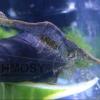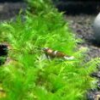Leaderboard
Popular Content
Showing content with the highest reputation on 06/13/14 in all areas
-
2 points
-
Just like to share some inhabitants in my new 4ft tank. Suffered a heavy lost of my TBs and mishlings while waiting for my new tank to setup and cycle but some survived. Hoping they will be alrite and start to breed again for me in their new environment Enjoy :)1 point
-
It's important for us to know the anatomical parts of your shrimp, especially when trying to describe a certain section that might be impacted by disease. This helps with the communication and describing issues when we are asking for help or when we are offering help. Have to use a drawing to get greater detail of these areas... Description: · Antenna - Shrimp use their antenna to feel around their perimeter looking for food and checking for danger. Shrimp also use their Antenna for “tasting†the water. They have 1 pair of the longer Antenna. These longer antenna are their long range danger detectors with 180 deg sweep from front to tail. The shrimp will use this in low light to feel around as they move. · Antenulles – similar to the longer Antenna, the antenulles are just shorter and they have 2 pairs. These shorter antenulles are also used to find food close to their mandibles (mouth), as well as to detect danger in front of them. · Carapace - The part of the Cephalothorax, commonly called the Head (actually includes the thorax too, hence the name cephalo-thorax). The carapace houses and protects the internal organs like the heart, gills, digestive tract and reproductive organs. · Abdomen - The back half of the shrimp or Pleon. This section is comprised of 6 smaller flexible sections. The first 3 segments behind the carapace is called the Tergum. And the last 3 segments of the abdomen is called the Pleuron. The abdomen is essentially a large fleshy muscle. · Eyes - For seeing, of course. They have very complex eye stalks that can contain up to 30,000 individual eyes. Although shrimp primarily use their antenna for sensing their immediate environment, their eyes are still a primary sensory organ to detect predators. They can sense brightness as well as movement, shapes & colours; and are able to see 360 degrees. · Rostrum - This is the nose part of the shrimp, and can be very sharp. The length of the rostrum varies with the type of shrimp. · Pereopods - These are the legs the shrimp uses for walking and climbing. Dwarf shrimp generally have 4 pairs of legs(8 in total). The pereopods also bear the sexual organs, which are the third pereopod in the female and the fifth pereopod in the male. · Chelipeds - are the modified legs that have small claws on them for grasping and ripping food. In Riffle Shrimps, these claws are replaced with fans that filter the water for food. · Maxillipeds – smaller appendages close to the mouth that hold food in place while they eat. · Pleopods - also called swimmerets; are the small swimming legs found on the underside of the Abdomen. These legs are used for swimming through the water column. They are also used by female shrimp for brooding eggs until they hatch. · Uropod - The uropod is the tail segment of the shrimp. The tail propels the shrimp rapidly backwards when flicked using the muscular abdomen. In between the fans of the tail is a pointier segment called the Telson. · Eggs - Fertilised eggs are held in the Pleopods. Freshwater shrimp usually carry few eggs (20 - 40). The mother will fan the fans occasionally to keep them clean and oxygenated. · Exoskeleton - This is the shell of the shrimp. This is mostly made of chitin, but also contains some calcium carbonate. As it grows the shrimp will regularly shed its exoskeleton, as the exoskeleton does not grow. So don’t be alarmed when you find an empty shell on the bed of the tank. It’s not a dead shrimp, just one that has grown out of it’s old shell. Contrary to what some might realise, the exoskeleton does not contain any colour. The colour of the shrimp that you see is actually beneath the exoskeleton.1 point
-
The first thing Little Miss 4 does every morning is check on her crystals. I catch her chatting to them a few times every day and she loves to feed them every night, (we count out 10 little pieces of shrimp food, or a little bit of whatever else our other shrimp are having. Every night she blows them kisses on her way to bed as well.1 point
-
1 point
-
I second that. But then I'm biased. <edit> Tidied up and added a little more detail in the Description section if it's even going to be a candidate for a Sticky.1 point
-
1 point
-
Besides selective breeding CRS/CBS, I personally believe they posses some TB/Mishling genetics, but crossed back to CRS/CBS, and in many generations of back crossing, PRL's are created......IMO of course.. I occasionally get a absolute black/white insane Mishling that has so much potential, and appear to have the depth of colour and intensity of a PRL.... on other occasions, some mishlings have colours legs etc....1 point
-
Thanks dude, yeah I just posted the pic to create excitement & give you guys something to aim at.1 point
-
1 point











